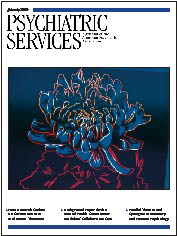Racial Disparities in the Use of Second-Generation Antipsychotics for the Treatment of Schizophrenia
Abstract
OBJECTIVE: Despite recommendations that second-generation antipsychotics be used as first-line treatment for schizophrenia, previous studies have shown that blacks are less likely than whites to receive these newer drugs. This study determined the rate at which second-generation antipsychotics were prescribed to whites and blacks with schizophrenia who were treated as outpatients. METHODS: Data were collected from a community mental health clinic affiliated with an academic center in Rochester, New York. Multivariate logistic regression was used to examine the association between race and the receipt of a second-generation antipsychotic. RESULTS: Data were available for 456 patients: 276 whites and 180 blacks. Ninety-five percent received a second-generation antipsychotic. Whites were approximately six times more likely than blacks to receive a second-generation medication, after the analysis controlled for clinical and sociodemographic factors (p<.001). Most of this difference appeared to be driven by a disparity in the use of clozapine. CONCLUSIONS: In this sample, blacks were less likely than whites to receive second-generation antipsychotics, demonstrating a persistent gap in the quality of care for patients with schizophrenia.



